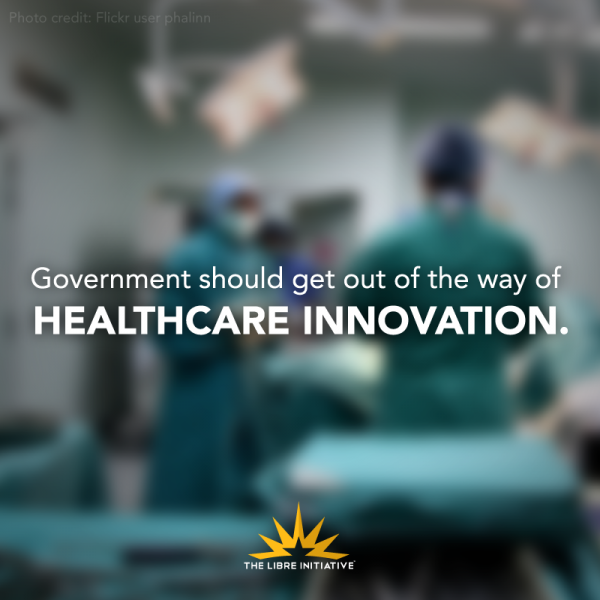Innovation in Healthcare Comes From Individuals, Not Government

Nearly six years after President Obama signed the disastrous Affordable Care Act into law, markets are leading the way in healthcare innovation. Many doctors and patients are now finding ways to avoid or side-step the insurance industry altogether by seeking out innovative services that provide routine care and visits for their patients in exchange for a monthly membership fee, called direct primary care (DPC). In fact, since the passage of the ACA, the number of physicians offering DPC services has skyrocketed. For U.S. Hispanics – a young, healthy, and relatively low-risk population – the benefits of signing up for such services may outweigh the cost of participating in ACA exchanges.
While relatively unheard of just a few short years ago, the number of physicians providing direct primary care in the United States has risen from just 750 at the time Obamacare was signed into law in 2010 to over 4,000 two years later. According to the Heritage Foundation, the rise of this type of service can be attributed to a number of new concerns over the impact of the President’s healthcare law. Doctor shortages, narrow networks, and frustration with reimbursement from third parties have all put pressure on doctors and patients to avoid the insurance industry entirely.
“The excessive amount of government intervention that has been entrenched in our nation’s health care system is curiously pushing medical providers to channel this negative energy into positive solutions – ones in which physicians are either scaling back or cutting off their relationships with middleman insurers to spend more time with their patients,” explains North Carolina health policy writer Katherine Restrepo on Forbes.
U.S. Hispanics have always had an uneasy relationship with Obamacare. Hispanic support for the president’s healthcare law dropped from over 60% in 2013 to 47% just one year later. Nevertheless, the administration has continued its relentless drive to enroll more Hispanics in the insurance exchanges. This should come as no surprise, given that the Latino population is relatively young, healthy, and at lower risk than the rest of the population. The insurance exchanges cannot function unless these groups of people pay for all the rest. However, Hispanics remain reluctant to enroll. Over time – revealing their lack of confidence – the administration has repeatedly lowered its expectations, and of the eventual number of enrollees was barely half what they had aimed for initially.
Despite the costs, controls, and labyrinthine regulations imposed by the President’s healthcare law, individuals will always manage to find the most efficient, effective way around the problem of finding care at an affordable cost. In order to produce better healthcare for more people at lower cost, year after year, policymakers should recognize the barriers to supply and innovation that exist in the American healthcare system and eliminate them. The FDA’s approval processes are slow and obsolete and its scope is too broad, certificate-of-need laws discourage competition, state-by-state licensing restrictions constrain and distort the supply of physicians, Medicare’s price controls skew treatment patterns, and unbreakable walls lock Americans into separate insurance markets, making competition useless. Hispanics demand alternatives to the current system, and these barriers should be prime targets for policymakers wishing to improve healthcare for the Latino community. It’s time to get government out of the way, and let individuals exercising their own choices lead in healthcare innovation.

